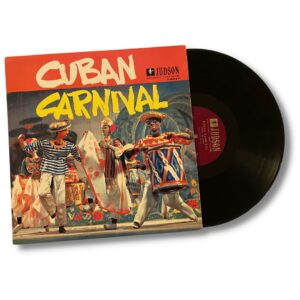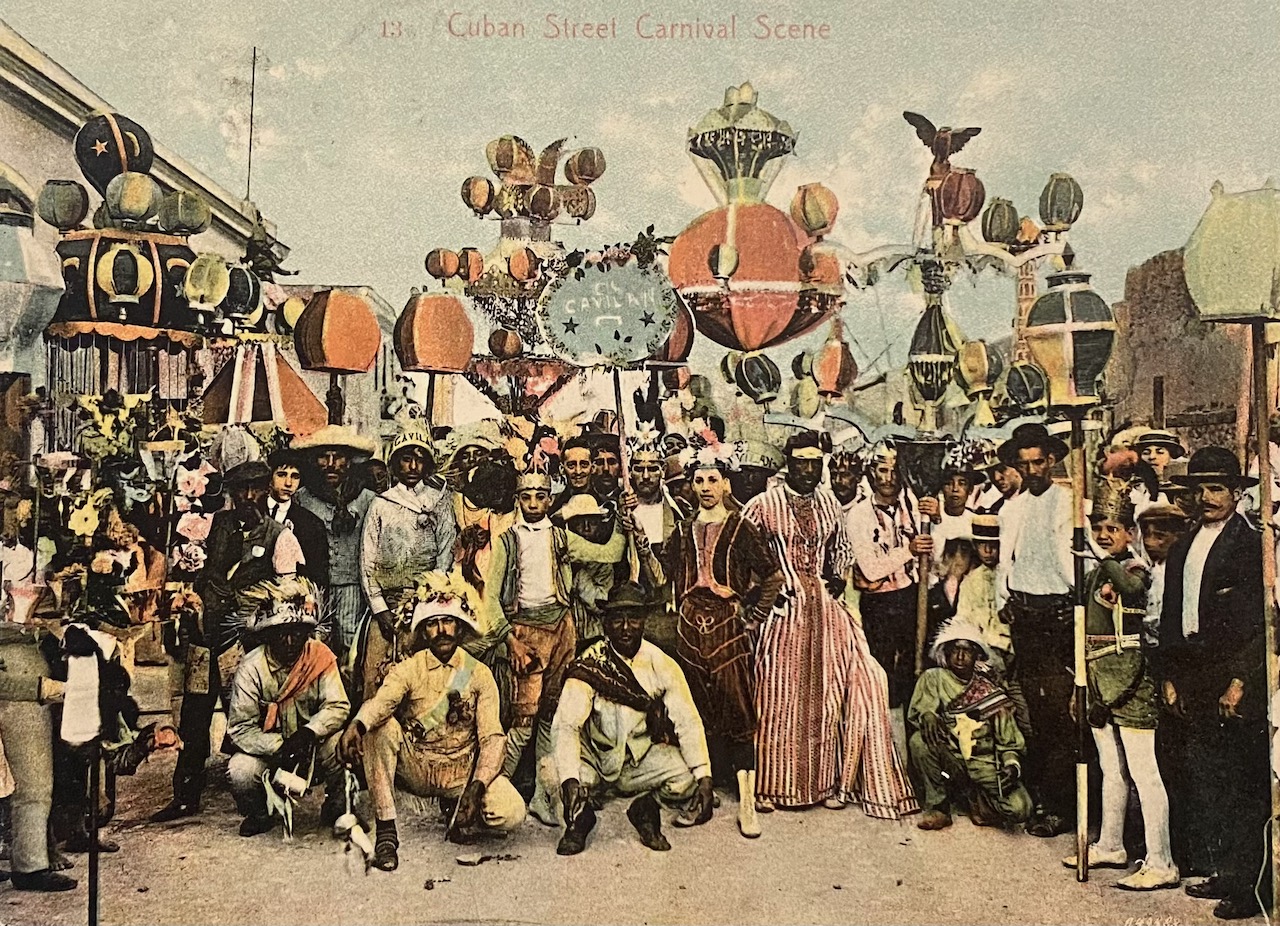Photo courtesy of Historia Negra de Cuba’s Archive
[ID: Cuban Carnival Street Scene circa 1907. A group of performers pose in colorful costumes on a sunny day in Cuba during the carnival.]
It was a sunny Havana afternoon when the Conga was born. The Orishas came down from the heavens and gifted it to us, mortals, so we could learn to be free. Historians say that the colonizers gave the enslaved a day off to parade throughout the city and that’s how the Conga came to be. I don’t believe them. The Conga’s too sacred for such origin story.

[ID: Album cover for Cuban Carnival with a record pulled out halfway. On the right side of the cover, there’s a puppet with a drum and to its left there are two other puppets dancing to what would be Rumba or Conga. In the background there are three other puppets as performers. The background looks tropical with palm trees and flowers.]
The Conga is widely known as Cuban carnival music. ¡Un, dos, tres, pa’llá! ¡Un, dos, tres, pa’cá! That’s how you dance it. One, two, three, to the left! One, two, three, to the right! The swag comes from within. The lead singer guides the crowd improvising call and response verses. The drummers beat at their own rhythm as the neighborhood follows them dancing its worries away.
Because my family lived in the back of the solar, our rundown government subsidized dwelling, we couldn’t always hear the Boom-boom-boom Tom-tom-tom. There was just almost never a moment of stillness in that place. Always some stray dog barking, some novela playing on the radio, some neighbors gossiping. Until everyone’s breathing would slow down as if they were looking to synchronize with the next door neighbor. Inhaling excitement, exhaling [as loud their lungs allowed] Hurry up, the Conga’s coming! Not a single soul would stay inside.
Siento un bombo mamita, me está llamando / I hear a bombo mommy, it’s calling me
During colonial times, the enslaved and free Negroes could go out and have a fun day. But be careful, they will start demanding freedom if you let them. The police were always there. Watching us.
When Cuba became an independent nation in 1902, politicians rushed to use the Conga for their politicking. Some in favor, some against it. What’s more dangerous than joyful Negroes singing out loud our deepest truths? Always using poignant street jargon, the Conga thrived in a spontaneity that’s never not political. That’s why dictator Gerardo Machado banned the Conga in the 1930s. Dictator-to-be Fulgencio Batista lifted the ban in 1937 and the Conga flourished as a performing art. From the hood to the world!
Growing up in 1990s Cuba, with the anxiety and desperation living in dictatorship during a crisis, the Conga somehow managed to feed our souls. It made us defiant. We got sassy and provocative. Even when the times changed, the police stayed. With a baton in their hands and a whip in their minds. The Conga and the police. Inseparable.
Tumba la caña, anda ligero, mira que viene el mayoral sonando el cuero. / Cut down the sugar cane, keep it cool, watch out the overseer is coming cracking the whip.
I dance to the Conga from my living room these days. Sometimes hoping to hear some shout Hurry up, the Conga’s coming! Freedom’s coming. So don’t just come over here to shake your body, baby, do the Conga. Let us treasure this Cuban Negro polyrhythmic communal love language. This might be our last utopian space of ultimate freedom.
This article appeared in the Spring 2023 issue of In Dance.


